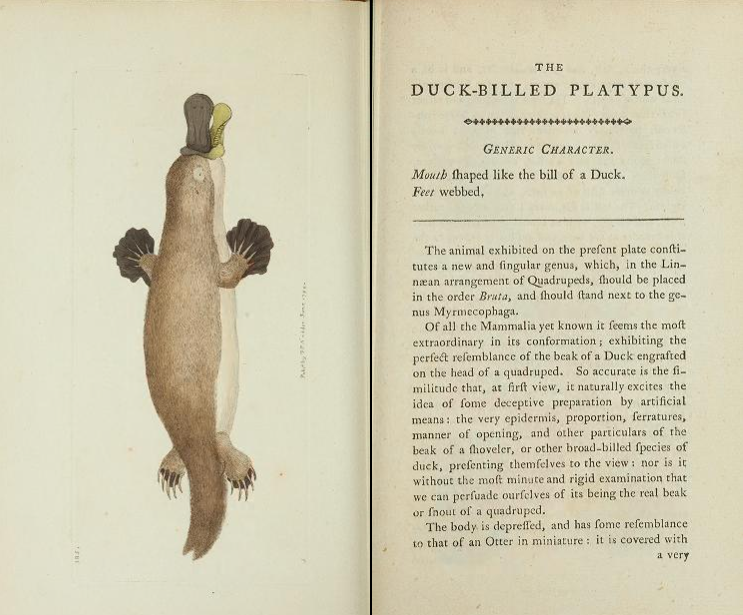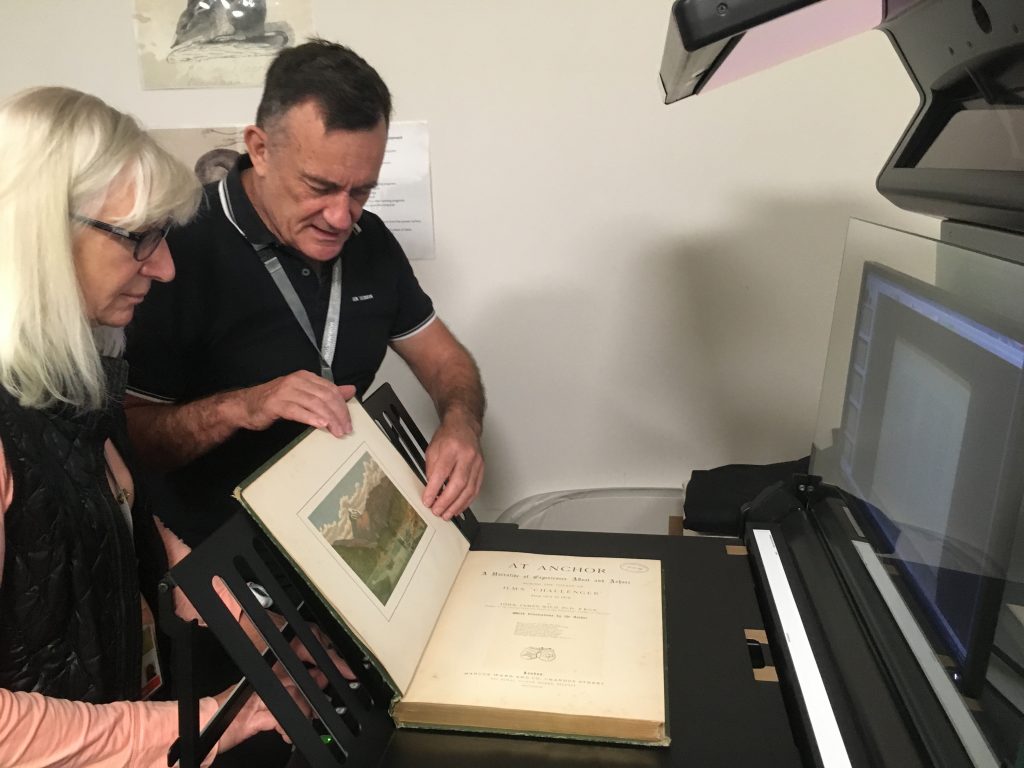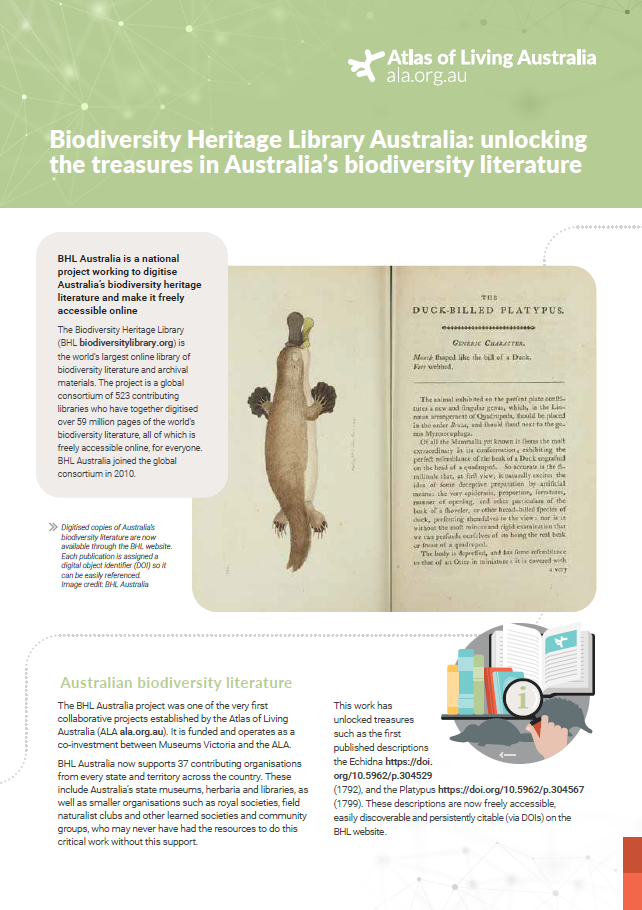The Biodiversity Heritage Library (BHL biodiversitylibrary.org) is the world’s largest online library of biodiversity literature and archival materials. The project is a global consortium of 523 contributing libraries who have together digitised over 59 million pages of the world’s biodiversity literature, all of which is freely accessible online, for everyone.
BHL Australia joined the global consortium in 2010.
Australian biodiversity literature
The BHL Australia project was one of the very first collaborative projects established by the Atlas of Living Australia (ALA ala.org.au). It is funded and operates as a co-investment between Museums Victoria and the ALA.
BHL Australia now supports 37 contributing organisations from every state and territory across the country. These include Australia’s state museums, herbaria and libraries, as well as smaller organisations such as royal societies, field naturalist clubs and other learned societies and community groups, who may never have had the resources to do this critical work without this support.

This work has unlocked treasures such as the first published descriptions the Echidna https://doi.org/10.5962/p.304529 (1792), and the Platypus https://doi.org/10.5962/p.304567 (1799). These descriptions are now freely accessible, easily discoverable and persistently citable (via DOIs) on the BHL website.
Making our biodiversity literature accessible and discoverable
The BHL Australia team prioritises the digitisation of Australian-published biodiversity literature. The literature scanning operation is housed at Melbourne Museum, where journals, monographs, archival material and grey literature are digitised. A significant proportion of the canning, post-processing and metadata addition is undertaken by a team of dedicated BHL volunteers, many of whom have been with the project since the very beginning.

Providing free, online access to biodiversity literature greatly benefits researchers and decision makers working in the fields of taxonomy (naming and categorising species), ecology and conservation. In particular, providing access to the first descriptions of species greatly benefits the taxonomic community as all descriptions of new or revised species must be referenced to species concepts that have been put forward before.
Assigning DOIs (digital object identifiers) is an important component of BHL Australia’s work. DOIs make the historic literature discoverable; they provide a unique and permanent link to each scientific description online, enabling authors, publishers, and taxonomic databases (such as the ALA) to persistently link to (and find) that literature.
Historic literature is critical to our understanding of Australia’s biodiversity, particularly our understanding of changes in species distribution and abundance. Since 2010, BHL Australia, and our evergrowing number of Australian contributors, have made almost 400,000 pages of Australia’s biodiversity literature openly accessible online.
For more information:
- You can access BHL Australia at www.biodiversitylibrary.org/collection/bhlau or via Twitter @bhl_au
- View or print this impact story as a PDF
